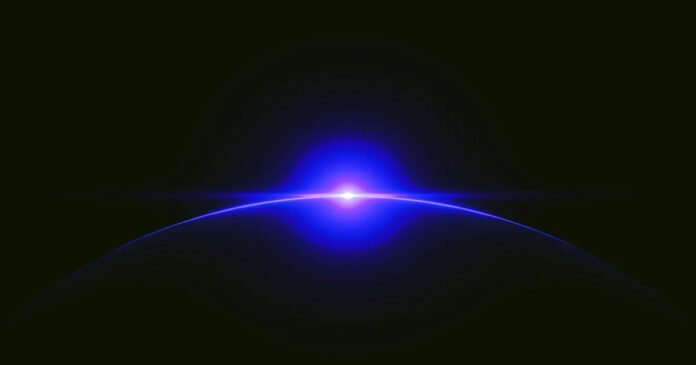The molecules that form the building blocks to life may be far more common in space than once thought, according to researchers from the Max Planck Institute.
Their work, published in The Astrophysical Journal, reports the detection of over a dozen types of complex organic molecules swimming closely around a protostar in the constellation Orion, suggesting that the chemicals can survive the violent processes that give birth to stars and thus may abound in space, instead of having to wait for a planet with the right conditions to form them.
Two of the most notable organic molecules detected in the system — tentatively, the astronomers stress — are ethylene glycol and glycolonitrile. Both are precursors of the nucleic acids that form DNA and RNA.
“Our finding points to a straight line of chemical enrichment and increasing complexity between interstellar clouds and fully evolved planetary systems,” lead author Abubakar Fadul, an astronomer at the Max Planck Institute, said in a statement about the work.
And thus, quoting the researchers’ statement: “this suggests that the seeds of life are assembled in space and are widespread.”
Until now, the assumption has been that most organic molecules would be destroyed when a star system is born from a chilly cloud of collapsing gas called an interstellar cloud.
When this happens, the protostar undergoes a violent, tumultuous change, blasting out damaging radiation that heats the surrounding gas while pummeling it with powerful shockwaves. This leaves behind a protoplanetary disk that can eventually form little worlds in the star’s orbit. But in the process, this was also believed to “reset” all the progress that’d been made towards seeding the system with chemical building blocks, which wouldn’t start again until the right planet with the ideal conditions came along.
“Now it appears the opposite is true,” study co-author Kamber Schwarz, a fellow astronomer at MPI, said in a statement about the work. “Our results suggest that protoplanetary disks inherit complex molecules from earlier stages, and the formation of complex molecules can continue during the protoplanetary disk stage.”
Complex organic molecules are difficult to detect because they’re typically trapped in shards called icy dust grains, where they first formed. But in the V883 system, the star is still blasting bursts of radiation into space as it feeds on the leftover gas in its disk.
“These outbursts are strong enough to heat the surrounding disk as far as otherwise icy environments, releasing the chemicals we have detected,” Fadul said.
Once liberated, the gases quickly heat up and produce emissions that astronomers can see. The researchers spotted them, fortuitously, using the Atacama Large Millimeter/submillimeter Array (ALMA), a huge radio telescope in Chile made of 66 separate antennas working in tandem.
Poetically, it appears that a young star’s destructive tendencies are freeing the seeds of life to roam space. If the precursors to life’s building blocks can survive a system’s violent formation, that means their chemical evolution can start way before planet formation begins. In short, it looks like life’s building blocks can form in space, and may be rife throughout the cosmos.
Follow-up observations will need to confirm the detections, but the results have the researchers buzzing.
“Perhaps we also need to look at other regions of the electromagnetic spectrum to find even more evolved molecules,” Fadul said. “Who knows what else we might discover?”
More on astronomy: Hubble Snaps Photos of Interstellar Invader






